Courts recognize substance-use disorder is a disease. Yet some judges continue punishing relapse with ever-longer probation and even prison.

Eric Daley raced in a sweat into the probation office in King of Prussia. It had been one of those mornings when things weren’t going right, starting when he called the hotline – as he was required to do every morning – and learned that, yes, he did have to report for drug testing that day by 10 a.m.
He was on a special type of probation the court called “addict supervision” that came with a warning: Miss or fail a single drug test, and be detained. And Daley was being tested three or four times a week. Unless he could catch a ride, he had to take three trains from his parents’ place in Hatboro – a two-hour trip each way. By the time he got back, he’d have missed his ride to the construction site where he was working. After a couple of weeks of that, he was fired.
On this morning, in early 2017, it was past 10:30 by the time he arrived for drug testing. He was turned away. Now he feared arrest.
This zero-tolerance approach to supervision is just one mechanism by which the criminal justice system ensnares people who struggle with substance-use disorders. Often, as in Daley’s case, it starts with some low-level arrest for drugs or theft, initially resolved with probation. But, for those unable to abide by the rules or pass drug tests, the punishments can be severe, including ever-longer probation, jail time, or even years in state prison.

For Daley, it had been a long, slow slide into trouble. He had grown up in Montgomery County — a passable student, good enough to go on to a junior college where he studied masonry and played basketball. It was for a basketball injury, a fractured bone in his ankle, that a doctor prescribed Vicodin. Soon, Daley was buying Percocets from a friend.
“When I got arrested — I committed a retail theft for the drugs — I knew it was bad,” he said.
That was in 2010, and he’d been in and out of jail since, cycling through relapse, reincarceration, and then more probation. By 2017, he’d been convicted of a few more bumbling heists: stealing from lockers at the YMCA, breaking into a pizza place where he’d once worked.
This time, after missing the drug test, and with the threat of arrest looming, he thought, why bother going for the next test? Why bother staying clean at all? He relapsed, and his mother and girlfriend insisted he turn himself in.
In the Montgomery County jail, his probation officer warned him he was out of chances — and could be headed to state prison. On a cell block filled with probation violators, Daley was caught between despair and hope.
“You’re still telling yourself there’s still a chance. Maybe I could get in that courtroom and convince the judge to let me go to rehab. Or, I’ve been here so long he’ll tell me, ‘OK, you can go home.’ ”
Justice system as treatment provider
Managing addiction has become a core function of the criminal justice system — a system that is, in many ways, poorly equipped for the mission. Federal surveys estimate close to half of people on probation or parole need treatment, while just a quarter receive it.
The scope of that crisis is evident in Philadelphia and across the state. About a quarter of those admitted into city jails are actively in opioid withdrawal, while 70 percent of state prison admissions have substance-use disorders.
Judges and lawyers describe a growing awareness that substance-use disorder is a disease that cannot be incarcerated away. In Philadelphia alone, judges refer 4,000 people each year for substance use and behavioral health evaluations by Forensic Intensive Recovery (FIR), which holds an $8 million contract with the city.
Despite these interventions, a failed drug test can count as a probation violation, for which a person can be detained and then resentenced. Earlier this year, The Inquirer observed 98 preliminary hearings for people in Philadelphia incarcerated for violations. In close to half, relapse or failure to complete treatment were key factors, though often the primary violation was absconding or a new drug charge.
It can feel impossible to escape that cycle for people like Eric Virelli, who was 19 and consumed by addiction when he committed a robbery in 2007. He was initially sentenced to state prison, followed by five years’ probation that he would repeatedly fail to complete. Instead, he’d be resentenced four times for relapsing, either for new drug-possession charges or refusing to report, knowing he’d fail a test and face incarceration. Each time, the punishments mounted — until, in 2017, he was resentenced to one to six years in state prison.
“They wouldn’t punish a diabetic or someone with cancer,” he wrote in a letter from Phoenix state prison, “so why punish a person with a drug problem when what they really need is help and ongoing treatment?”
In Philadelphia and its suburbs, more than 6,000 people each year are convicted of possessing drugs for personal use, or for drug paraphernalia. One quarter will fail on probation and parole, and be sentenced all over again, a review of court records shows; in the end, nearly one-third will end up in jail.
Of more than 6,000 people in Southeastern Pennsylvania convicted in 2013 of possessing drugs or drug paraphernalia for personal use, nearly three in 10 got jail time, either right away or after violating probation. The typical jail term was several months, often as time spent locked up while waiting for the case to be decided.
For Montgomery County probation chief Michael Gordon, those individuals pose a dilemma.
“Our first three or four steps are treatment,” he said. But sometimes it’s necessary to detain people.
“If someone keeps using heroin and we can’t stop them,” he said, “eventually, we run out of options. We don’t want people to die. Unfortunately, it boils down to: If we don’t do anything, someone is going to die.”
Yet, that approach is largely decried by medical experts, who note that the threat of incarceration, rather than deterring drug use, has been shown to increase risk of relapse.
Those who violate terms of probation in Pennsylvania by failing drug tests, not reporting, traveling without permission, or any number of other infractions that don’t involve a new criminal conviction can still face steep punishment – up to the maximum prison sentence for their original crime. Limited jail stays, advocates say, could still deter bad behavior, without the cost of extended incarceration or the possibility of extreme punishments for minor violations. Some put a different and more punitive twist on the idea, arguing for “swift, certain, proportionate” punishments in which any technical violation results in a short jail stay, with the idea that predictable and moderate punishment is the key to behavior change.
About 14 states have imposed caps on incarceration for technical violations. Louisiana limited jail to 90 days for first-time technical violators – a reform that cut the average time spent in jail by more than nine months and saved taxpayers $17.6 million a year, with no effect on public safety, according to Pew.
A proposed state law would create a system of graduated sanctions and limiting jail for technical probation violations to 30 days, without making jail mandatory. Without action from Harrisburg, change could be possible on a local level. Philadelphia DA Larry Krasner has said he’s seeking no more than 60 days in jail for technical violators, but it’s up to judges whether to enact that shift. Pennsylvania has already authorized courts to create their own “swift, certain, proportionate” programs; Chester County launched one in 2015, targeting drug users with a history of violating probation with automatic, short jail stints for violations. While the automatic jail stays are controversial, Chris Murphy, chief of probation there, said it has changed behavior and prevented lengthy jail stays: 95% of drug tests among the program’s 50 participants are negative. “They know if they’re going to use, they’ll go to jail,” he said, “and just knowing that gives them some outward motivation to stay clean.”
“The very definition of substance-use disorder is continued and compulsive use despite negative consequences,” said Leo Beletsky, who heads the Health in Justice Action Lab at Northeastern University in Boston. It’s not productive, he said, to threaten jail for people “whose disorder by definition makes them less responsive to those consequences.”
One way the system has responded to this tension between medical consensus and law-and-order imperatives is by funneling people like Daley into a specialized, “voluntary” form of supervision called treatment court. These intensive programs, which require frequent court dates, treatment, and drug testing, may allow participants to work toward having their charges dropped, or may be offered as an alternative to jail for those who have violated probation.
For people like Daley, treatment courts seem almost indistinguishable from probation, as they’re still reporting to probation officers, they’re still constrained by many of the same conditions assigned to those on probation, and they’re still subjected to the same severe consequences if they fail. The main difference, Daley said, was that the drug court burden was more onerous — “the hardest thing I’ve ever had to do in my life.”

Even so, drug treatment courts have been adopted enthusiastically around the country. Advocates say they’ve been critical to rerouting people with substance-use disorders out of jails and into treatment. And judges who run them say they’re saving taxpayers money — and saving lives.
“The coercive structure of a criminal justice system is more effective than if someone is not in [the system],” said Judge Steven O’Neill, who has overseen the Montgomery County drug treatment court since 2006, his courtroom walls lined with the art projects and essays of graduates, as well as photographs of participants who died of overdoses. “Parents can’t make their kids go to treatment. Spouses can’t make their loved ones go to treatment. What is it that we have that can force people to go to treatment? This is it.”
But in some cases, forced treatment can cause more harm than good.
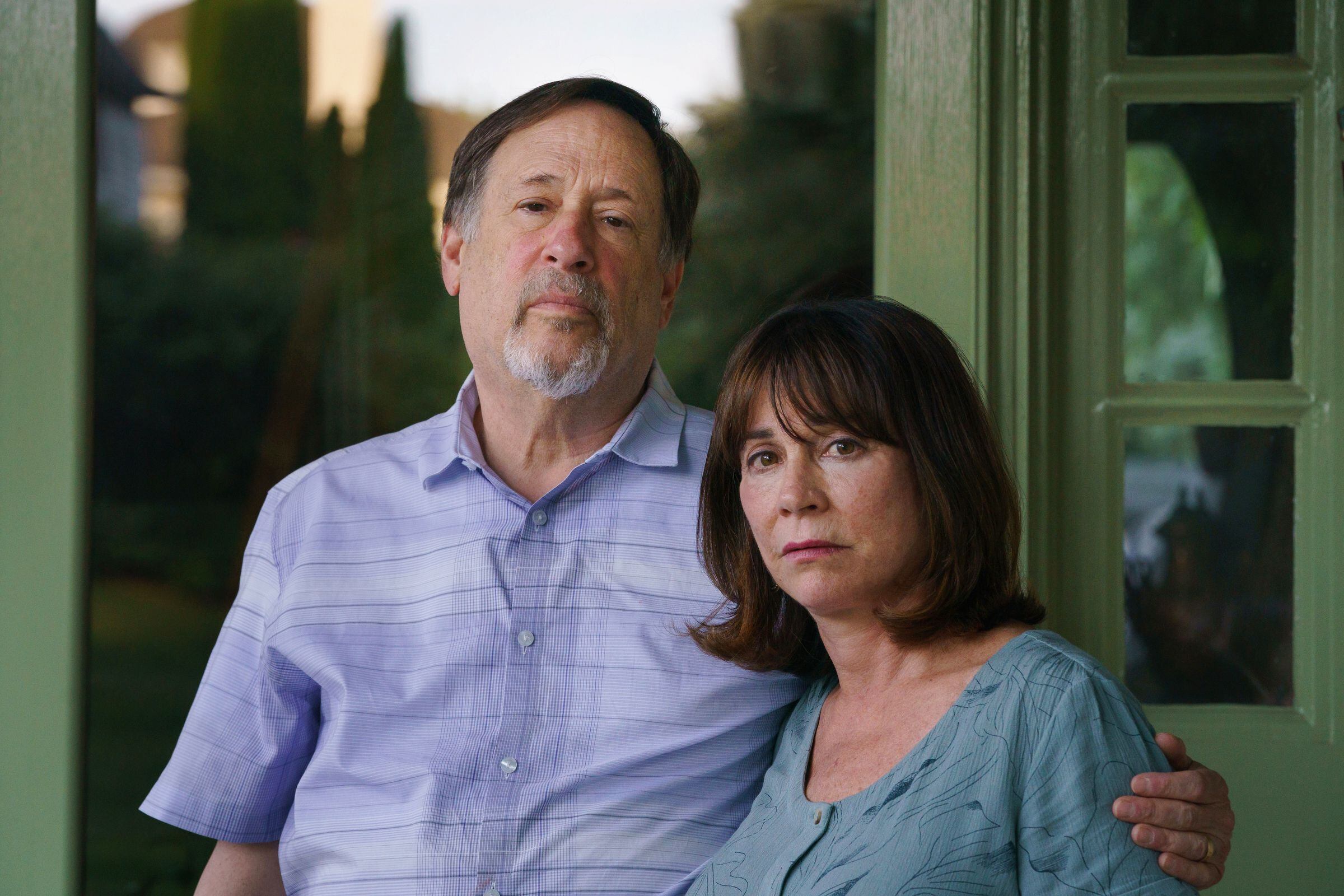
‘Why punish a person with a drug problem?’
In 2015, David and Carol Augenblick learned of a burglary at their home, on a quiet, tree-shaded cul de sac in Lafayette Hill. Their son, Jonathan, was arrested and charged with receiving stolen property, a felony.
“We were not going to press charges, because we knew what impact that would have,” said David Augenblick. He figured he’d refuse to testify, and the case would be dropped. Then, Jonathan, a heroin user with bipolar disorder, was offered admission into Montgomery County drug treatment court — but only if he first pleaded guilty.
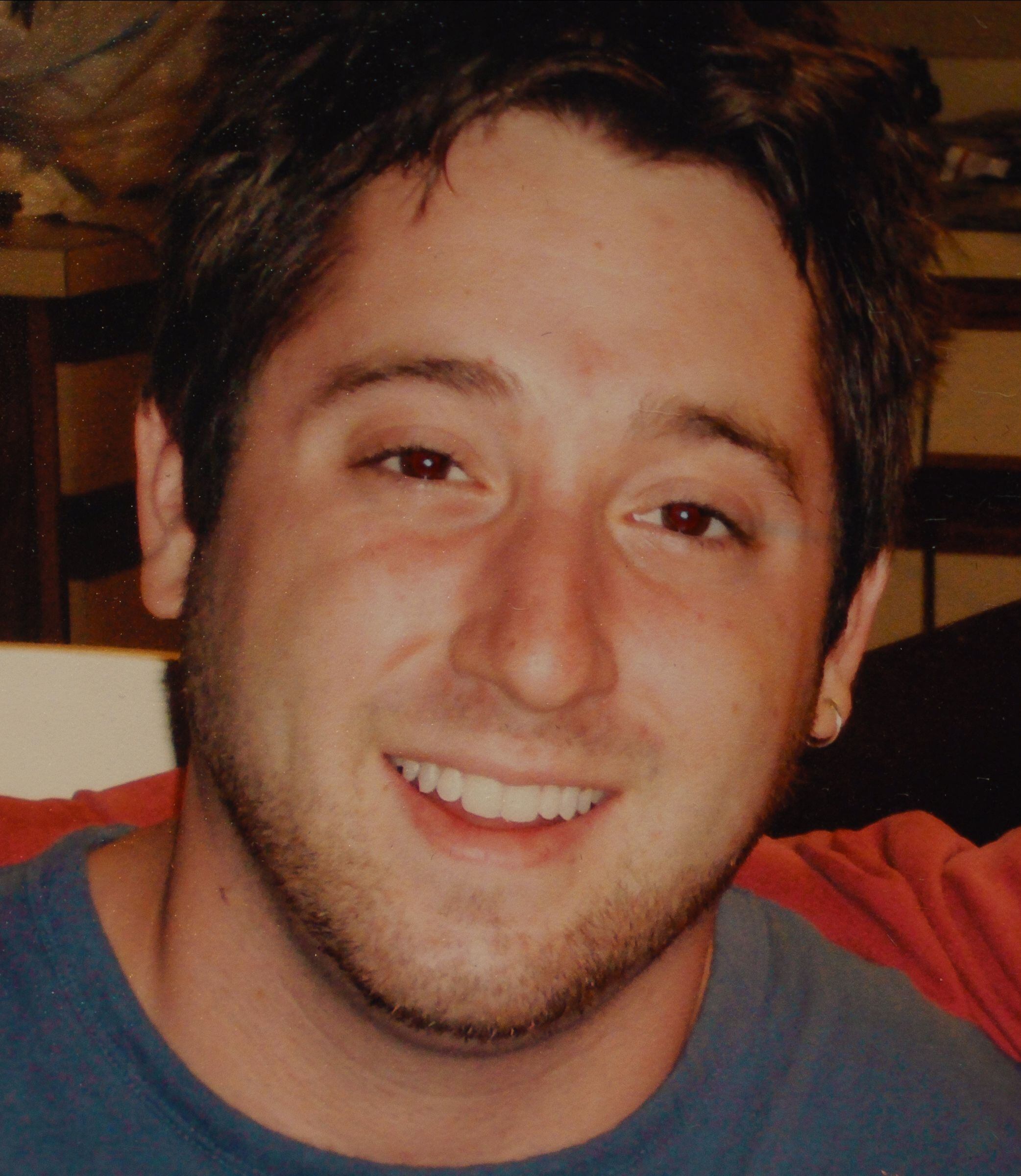
“We were just focused on getting him help, not knowing the consequences,” his mother said. “I would never have agreed to this if I had known.”
Jonathan kept relapsing every few months — and each time, he’d land back in jail, where he received no treatment at all. By the time he was kicked out of treatment court, he’d already spent a year and a half incarcerated. He’d then be released on probation, only to relapse, fail a drug test, and cycle back into jail.
“He’s spending his whole adult life in the local prison,” his father said. “You can see every time he comes out he’s less and less of a person.”
David Augenblick was standing in the back of the courtroom this June, waiting for Jonathan’s latest probation-violation hearing, a proceeding that had been delayed three times, leaving him incarcerated seven months. The Augenblicks had spent around $15,000 in legal fees trying to extract their son from the system. Now, he was facing what they feared most: state prison.
He had encountered a reality that’s often lost in the conversation about these “problem-solving courts.” Statewide, just 56% of those leaving drug courts did so successfully in 2017, in line with the national average. For those who fail, punishments can be far harsher than if they had not been given the “break” of treatment court in the first place.
John Roman, a researcher based at the University of Chicago who has conducted numerous drug court evaluations, said he’s found the programs do reduce offending, drug use, and incarceration for those who graduate. But the reductions in incarceration that drug courts achieve are nearly canceled out by the lengthy sentences imposed on those who fail.
“People who fail tend to do no better, or maybe even worse, than people who don’t participate at all,” he said.
That’s borne out in Montgomery County, where those unsuccessfully discharged from drug court in 2016 had already served an average of 306 days in jail, an analysis of court dockets revealed. Two-thirds of them would be resentenced to probation, jail, or even state prison.
On a recent Friday afternoon, Judge O’Neill had his courtroom set up for treatment court by placing a lectern in front of his bench, facing a mirror emblazoned with the phrase “WHO AM I.”

Soon, participants began arriving to take their turn at that lectern. The court has an above-average graduation rate — 68% in 2017 — evident in the roll call of “100 percenters,” who had fulfilled all their obligations; they were entered into a raffle to win $100 off their court costs.
Then came individuals graduating from one phase of the program to the next, to tepid applause.
As others stepped up, though, sheriff’s officers crept quietly behind them.
One man had tested positive for alcohol, which he attributed to a dose of NyQuil. “You didn’t bother reading the label, did you?” O’Neill asked. He sent the man to jail for 24 hours. “Now you know,” the judge said, as an officer snapped on handcuffs.
Then came a woman who’d submitted a urine sample too diluted to analyze. O’Neill gently scolded her for mismanaging her fluid intake. “I just got a little extra with the coffee,” she said, explaining she’d struggled to stay awake and to juggle overnight work, AA meetings, and frequent drug testing. “All right,” she relented, as she, too, was handcuffed and led away to jail, “have a nice Labor Day weekend.”
Despite a state Supreme Court accreditation program designed to standardize drug courts, each runs differently, shaped largely by the attitudes of the presiding judge.
In Pittsburgh, Judge Lester Nauhaus has controversially limited medication-assisted treatment in treatment court, requiring anyone who’s on methadone or suboxone to taper off and permitting only Vivitrol, an opioid blocker.
“We want them to live as sober and clean a lifestyle as they can, and not substitute one drug for another,” said Karen Duffola, Allegheny County treatment court coordinator.
In Delaware County, where Judge Frank Hazel was reluctantly cast in the role of treatment court judge in 2008 after 35 years of locking people up, he cycles through the roles of social worker, judge, and kindly teacher — inquiring not only about participants’ sponsors and treatment regimens, but about their new jobs, their children’s college search, their home renovations, and their ear gauges. He emphasizes the basic skills of adulthood: time management, coping, emotional regulation. He shares personal stories (like the time he tried to nail an opposing player rounding home plate in a youth baseball game and ended up beaning an old lady instead).
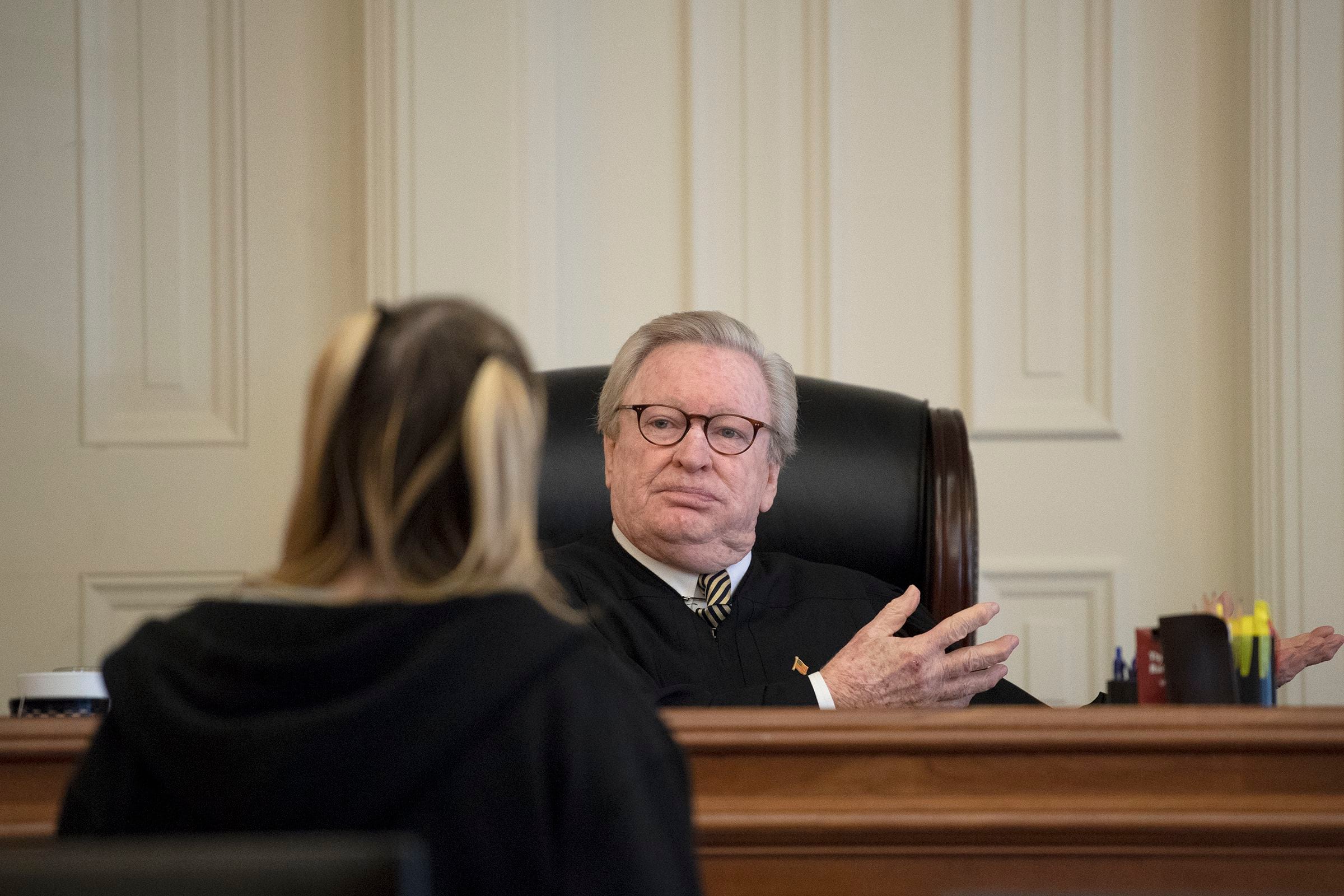
“This is not an abstinence program,” Hazel said in an interview. “This is a recovery program. We don’t just want you to stop using drugs. We want your life to change.” Of more than 200 graduates, he said, 86% have never been arrested again.
But half of participants fail — oftentimes, Hazel said, because they “don’t give a rat’s ass.” He often resentences them to state prison or state intermediate punishment, a two-year program that includes prison and community-based treatment. To Hazel’s mind, these are not punishments so much as additional opportunities for recovery.
In Philadelphia, Judge Frank Brady appears to take a similarly compassionate approach, reassuring participants that, though sobriety is the goal, all he requires is that they show up for tests and engage in treatment. (Brady and Philadelphia treatment court coordinator Matt Schmonsees declined to comment for this story.)
In court recently, he urged one participant to cut back on marijuana, and asked another why he had missed four weeks of mandatory tests. For those who had just one positive test, the sanction was not jail but a day in the jury box in Brady’s courtroom, a punishment akin to in-school suspension. Jail sanctions were reserved for repeat violators, like a man who had absconded from two inpatient programs and then overdosed on fentanyl.
Philadelphia’s drug court boasts a graduation rate 20 percentage points higher than the state average, perhaps, in part, because of its more forgiving approach. But it can also drag on for years — in some cases, pushing a decade. On average, 2017 graduates spent 18 months in the program, while those who failed spent 28 months before being discharged and sentenced.
Beletsky, the Northeastern professor, said that protracted supervision has consequences.
“One way in which we over-criminalize folks is by keeping them ensnared in the system,” Beletsky said. “It’s extremely disruptive. It strips them of dignity. It requires them to comply with all these conditions. ... And it tethers people to the criminal justice system and makes it hard for them to gain control of their lives. It does the opposite of what it’s supposed to be doing.”

Back in the Montgomery County jail, where Jonathan Augenblick was waiting to be sentenced for the fourth time on his 2015 conviction, after relapsing in treatment court and then relapsing on probation, he had come to feel that incarceration was an inevitability.
“Every time I come back here, I feel more hopeless. It almost feels like your brain degenerates, you’re stressed all the time,” he said by phone. “Then, they think when you get out, you get right on your feet, you get a job. But it’s not easy when you lose everything every time you come in there and you have to start all over again.”
In court for Augenblick’s resentencing, O’Neill described the flipside of that relationship. “We’ve tried pretty much everything we could,” he said, acknowledging Augenblick had tried as well and had sustained periods of sobriety.
“These cases are obviously about the substance-use disorder,” the judge said, calling Augenblick’s disease “particularly cunning and baffling.”
Then, he sentenced Augenblick to up to two years in state prison.
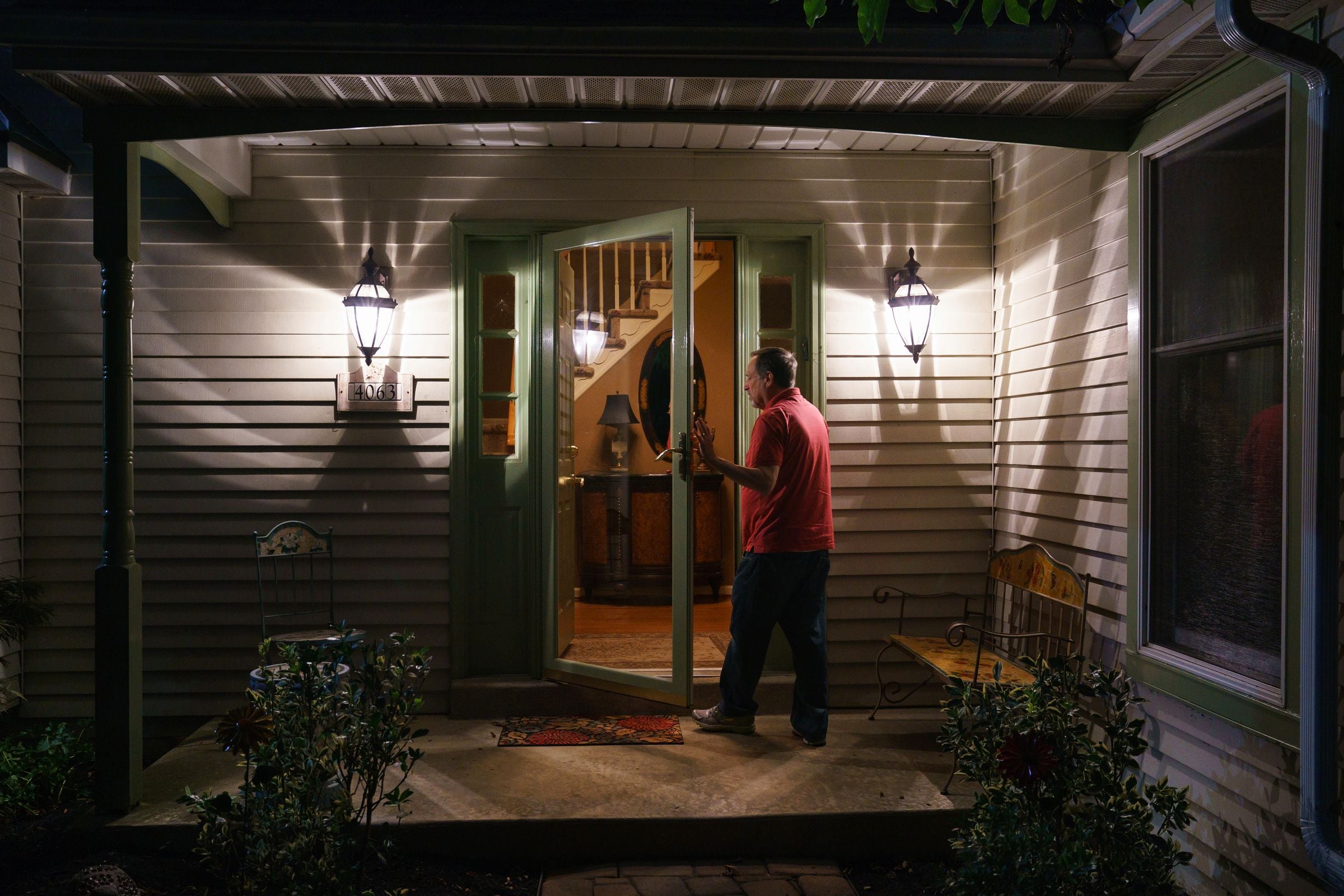
When treatment is misplaced
Imperfect though it may be, drug treatment court is what the justice system has to offer defendants with substance-use disorders. But most will never get that opportunity.
“We’ve estimated that 3% of eligible arrestees with a substance-abuse disorder are offered drug court,” said Roman, the University of Chicago researcher. To his mind, “It is a good idea, evidence based, that just was never scaled.”
Even more problematic, according to Beletsky, are the “broken” eligibility criteria that exclude many high-need people, while including others who might not need the help. One study found as many as one-third of admissions might not be in addiction in the first place.
For instance, Philadelphia treatment court, which bars anyone with two or more prior convictions, primarily accepts people charged with drug dealing rather than drug use, said Evan Anderson, a public health and legal expert at the University of Pennsylvania’s nursing school.
Philadelphia City Council held hearings looking at the issue this year, but there has not been legislative action or a policy shift in the courts. Proposed laws in Harrisburg that touch on the issue focus on ensuring that people with medical marijuana cards are not found in violation for testing positive for marijuana.
“The Penn freshman who gets caught with a pound of marijuana and goes to drug treatment court probably doesn’t need those resources. The person with the 10 retail thefts, who really does need a more intensive intervention, usually gets nothing,” Anderson said. “It’s kind of backwards.”
One reflection of that: In 2017, the year opioid-overdose deaths in Philadelphia peaked at 1,200, 68% of people coming out of Philadelphia’s treatment court were primarily marijuana users, according to court data. Just 12% were primarily heroin users.
For people like Alexander “AJ” O’Connor — who had used marijuana and “a little Percocet” before a drug-selling charge landed him in the program — that means they’re ordered into treatment they feel they don’t need.
“It wasn’t hard to stop [using],” O’Connor, a lanky 24-year-old with dreadlocks, said outside the courtroom one morning this September.
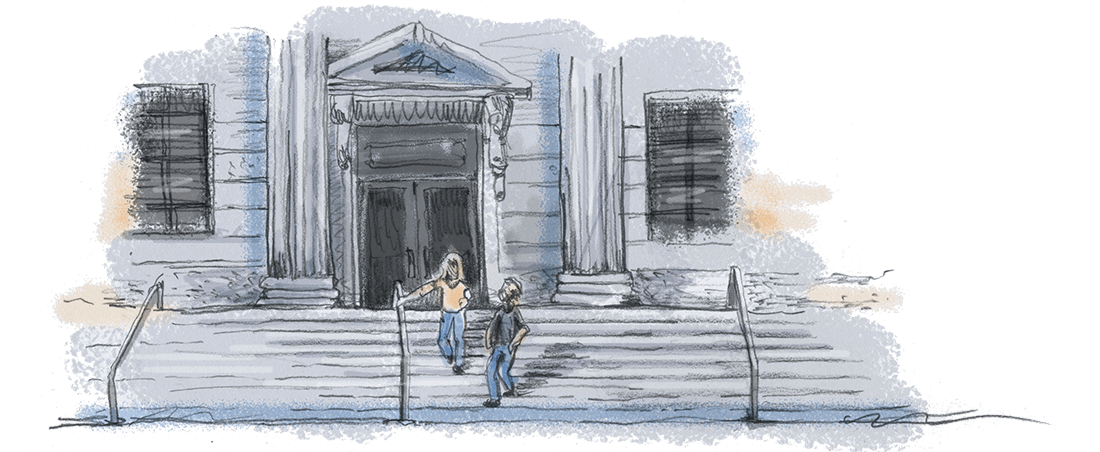
The hard part was keeping up with all the requirements of drug court, along with his job in an Amazon warehouse to support his wife and three kids. When he fell short, he’d be locked up. One time, he lost his job while incarcerated. At other times, his wife could not keep the lights on or her phone connected. Most recently, he said, he was kicked out of his treatment program after his health insurance lapsed, resulting in yet another jail sanction.
O’Connor shook his head. “I’d rather go to jail before I’d do that program again,” he said. “It’s all a setup.”
That morning, O’Connor was discharged from treatment court after 2½ years. He had not graduated, but he had served enough jail time that Brady agreed to let him go with no further penalty.
Now, O’Connor, who had no prior convictions, was leaving with the very thing he’d entered treatment court to avoid: a felony drug charge on his record.
Recently, Philadelphia District Attorney Larry Krasner has been seeking to move people with low-level marijuana charges out of treatment court.
And, Philadelphia Common Pleas Court Judge Benjamin Lerner said he’s seen the system evolve in other ways: Prosecutors and probation officers no longer come into his courtroom arguing that people who fail drug tests are flouting his authority and ought to be incarcerated.
But he acknowledged a shortage of resources, particularly residential treatment beds, does sometimes drive judges to keep people locked up.
The choice before him in such cases is this: “Either they remain incarcerated in the county prison system for longer than you think is necessary or appropriate, or you take a greater risk than you would like to take. I took a greater risk with a woman who was in front of me last year with very serious addiction problems. ... I knew she needed very secure housing. It wasn’t available. I took a chance [and released her]. She’s dead now.”
That, Anderson and others argue, reflects a fundamental failing in the safety net. Keeping the woman locked up may have prevented her from overdosing that day, but it would not help her recover.
“Punishing people for those sorts of lapses will never produce durable change,” Anderson said. “Incarceration is not therapeutic.”
For Daley — the Montgomery County man who missed his drug test, then relapsed — it was the stress of the looming jail stay that triggered him to use again.
In August, after five months in jail, Daley finally was back in court. The offer was now a one-to-three-year term in state prison. If he refused, Daley said, he was told a contested hearing might be months away. He took the deal.
Only after Daley was transferred to state prison did he actually receive drug treatment while incarcerated. He was admitted into a therapeutic community at the State Correctional Institution Chester, and he credits that with helping him overcome his addiction.
It’s hard for him to feel grateful, though, given the violence and misery he encountered in state prison outside the therapeutic program. “All day, every day, I had to be on point, or if not, anything could happen to me.”
And when he finally came up for parole, he was rejected — told to wait nine more months before reapplying. The reason? His poor record of compliance with probation.
 Pathways Drug Rehabilitation Luxury Addiction Treatment & Detox Center
Pathways Drug Rehabilitation Luxury Addiction Treatment & Detox Center


